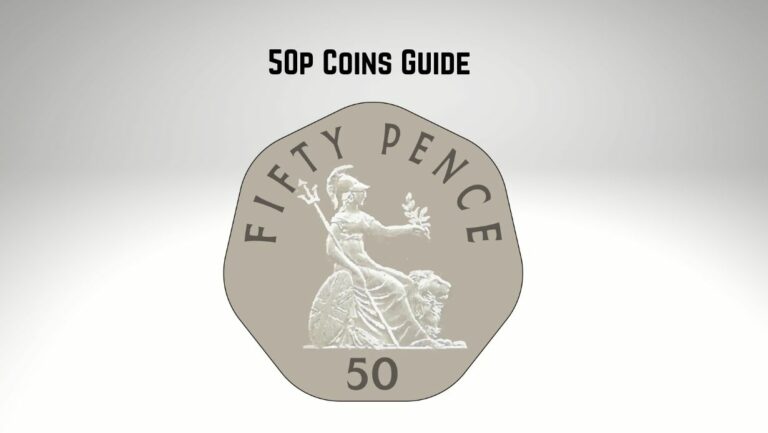
Welcome to our exploration of the fascinating world of 1774 Maryland Colonial Currency. In our article, we delve into the history and significance of these unique monetary instruments that played a crucial role in the economic landscape of colonial America.
During this period, Maryland issued its own currency to facilitate trade and commerce within the colony. Understanding the intricacies of this currency provides valuable insights into the economic conditions and challenges faced by the early settlers in Maryland.
Join us as we uncover the story behind the 1774 Maryland Colonial Currency, shedding light on its design, value, and impact on the daily lives of the people living in colonial Maryland.
Historical Context of Maryland in 1774
In 1774, Maryland was a bustling colony on the brink of significant historical events. The residents of Maryland were deeply entrenched in the American Revolutionary spirit, with tensions rising between the colonists and the British government. This was a time when passionate discussions about independence and liberty filled the streets of Maryland.
The economic landscape of the colony was heavily influenced by agriculture, with tobacco being the primary cash crop. Maryland’s economy was also supported by industries such as shipbuilding and iron production, contributing to the colony’s overall prosperity.
Socially, Maryland was a diverse colony with a mix of cultures and ethnicities, including European settlers, enslaved Africans, and Native American tribes. This cultural melting pot created a unique societal fabric that shaped the daily lives of Maryland residents.
Furthermore, in 1774, Maryland was actively involved in political discussions and actions against British taxation and control. The colony was a hotbed of revolutionary sentiment, with many residents vocally supporting the idea of breaking away from British rule.
Overall, the year 1774 was a pivotal moment in Maryland’s history, setting the stage for the colony’s active participation in the impending American Revolution. The historical context of Maryland in 1774 sheds light on the political, economic, and social factors that influenced the issuance and significance of the 1774 Maryland Colonial Currency.
Issuance of Maryland Colonial Currency
In 1774, Maryland faced economic challenges exacerbated by the impending revolution. To bolster the economy and address the scarcity of official currency, the colony took a significant step by issuing its own colonial currency. This move aimed to stimulate trade, facilitate transactions, and sustain economic activity amidst the turbulent times.
The Maryland Convention that gathered in Annapolis in late 1774 played a crucial role in this decision. The convention decided to authorize the issuance of $1.25 million in bills of credit to circulate as legal tender within the colony. John Clapham and Frederick Green were appointed as signers of the currency, adding an official seal of approval to the bills.
The Maryland Colonial Currency featured intricate designs and anti-counterfeiting measures to ensure its legitimacy. Denominations ranged from smaller values like 6 Pence to higher denominations such as 20 Shillings. These bills circulated alongside other forms of currency, providing a vital medium of exchange during uncertain times.
The issuance of Maryland Colonial Currency not only addressed immediate economic needs but also symbolized the colony’s growing push for financial independence and control over its monetary system. This bold step underscored Maryland’s commitment to autonomy and resilience in the face of evolving political dynamics, setting the stage for further economic developments in the lead-up to the American Revolution.
Design of 1774 Maryland Colonial Currency
When examining the design of the 1774 Maryland Colonial Currency, we are struck by the level of detail and sophistication embedded in these historical artifacts. Featuring intricate engravings and ornate patterns, each bill exuded a sense of craftsmanship and authority. The anti-counterfeiting measures incorporated into the currency were ahead of their time, showcasing Maryland’s commitment to ensuring the integrity of its monetary system.
The denominations of the bills ranged from 6 Pence to 20 Shillings, catering to a wide range of transactions in the colonial economy. Each denomination was strategically chosen to facilitate trade and commerce within Maryland and beyond, underscoring the significance of these bills as a vital medium of exchange during a tumultuous period in American history.
Moreover, the symbols and imagery featured on the currency reflected Maryland’s unique identity and values. From depictions of local landmarks to patriotic emblems, the designs captured the essence of Maryland’s spirit of independence and resilience. Not only did these bills serve as a practical means of conducting business, but they also served as symbols of solidarity and defiance in the face of political uncertainty.
Overall, the design of the 1774 Maryland Colonial Currency serves as a testament to the artistry, innovation, and historical significance of these monetary instruments. Each bill stands as a tangible representation of Maryland’s quest for economic autonomy and its unwavering commitment to navigating the challenges of a changing world.
Value and Usage of the Currency
When examining the 1774 Maryland Colonial Currency, we can gain insight into its value and versatile usage. These bills, ranging from 6 Pence to 20 Shillings, were crucial instruments in daily transactions across Maryland. Merchants, farmers, and artisans relied on them for buying goods, paying debts, and conducting business. The flexibility of these denominations ensured smooth trade and economic activities in the colony.
Moreover, the currency’s stability and widespread acceptance reinforced its value in the eyes of the populace. Unlike bartering or unreliable forms of payment, these bills provided a secure medium of exchange that fostered commercial growth and financial stability. The intricate designs and anti-counterfeiting measures instilled confidence in the authenticity of the currency, enhancing its credibility among stakeholders.
Overall, the 1774 Maryland Colonial Currency was not merely a means of trade; it was a vital component of Maryland’s economic framework. Its reliable value and effortless circulation supported the colonies in navigating through uncertain times and solidified its position as an indispensable tool of commerce.
Impact on Colonial Maryland Economy
When examining the Impact on Colonial Maryland Economy, it’s crucial to recognize the substantial role that the 1774 Maryland Colonial Currency played in shaping economic dynamics. Merchants, farmers, and artisans heavily relied on these bills for various financial transactions, underscoring their significance in fostering commercial growth and financial stability within the colony. The stability and widespread acceptance of these currencies greatly contributed to Maryland’s economic framework, supporting the colonies during periods of uncertainty and reinforcing their importance in daily trade.
The anti-counterfeiting measures implemented in the design of the currency not only enhanced its credibility but also safeguarded the economy from fraudulent activities. The standardized nature of the bills ensured consistency in value and facilitated smooth transactions, further solidifying their reliability in monetary exchanges. This trust in the currency strengthened financial stability, promoting economic growth and facilitating trade relationships both within and beyond the colony.
Moreover, the widespread circulation of the 1774 Maryland Colonial Currency stimulated local commerce and encouraged investments in various sectors of the economy. Its utility as a medium of exchange facilitated the flow of goods and services, enabling businesses to thrive and communities to prosper. The currency’s impact extended beyond mere transactions, actively shaping the economic landscape of Colonial Maryland and laying a foundation for future financial endeavors.
Key Takeaways
- 1774 Maryland Colonial Currency played a crucial role in the economic landscape of colonial America, offering insights into the early settlers’ challenges and economic conditions.
- Maryland in 1774 was a diverse colony deeply engaged in political discussions against British rule, with agriculture being a significant part of its economy.
- The issuance of Maryland Colonial Currency in 1774 aimed to address economic challenges and symbolized the colony’s push for financial independence.
- The intricate designs and anti-counterfeiting measures of the currency reflected Maryland’s commitment to ensuring the integrity of its monetary system.
- The currency, ranging from 6 Pence to 20 Shillings, was widely used across Maryland for various financial transactions, supporting commercial growth and stability.
- The circulation of the 1774 Maryland Colonial Currency significantly impacted the colony’s economy, fostering trade relationships, stimulating local commerce, and strengthening financial stability.
Conclusion
The 1774 Maryland Colonial Currency played a pivotal role in shaping the economic landscape of Colonial Maryland. Its stability, widespread acceptance, and anti-counterfeiting measures ensured financial security and promoted commercial growth. By fostering smooth transactions and encouraging investments, this currency laid a solid foundation for future financial endeavors. Its standardized design not only maintained consistency in value but also stimulated local commerce and facilitated trade relationships. The impact of this currency on the economy of Colonial Maryland cannot be underestimated, as it actively contributed to the region’s financial stability and growth.
Frequently Asked Questions
What was the importance of the 1774 Maryland Colonial Currency?
The 1774 Maryland Colonial Currency played a crucial role in boosting the economy of Colonial Maryland by facilitating financial transactions among merchants, farmers, and artisans, promoting commercial growth and financial stability.
Why was the 1774 Maryland Colonial Currency widely accepted?
The currency gained widespread acceptance due to its stability, standardized design ensuring consistency in value, and effective anti-counterfeiting measures, enhancing its credibility and safeguarding the economy of Colonial Maryland.
How did the 1774 Maryland Colonial Currency influence commerce?
The circulation of the currency stimulated local commerce, encouraged investments, facilitated trade relationships, and actively shaped the economic landscape of Colonial Maryland, laying a foundation for future financial endeavors.






